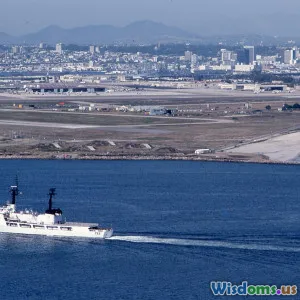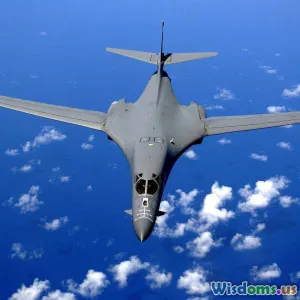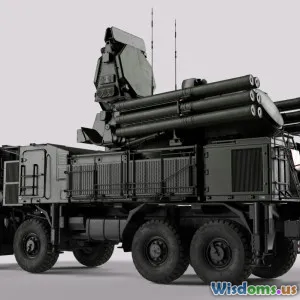
Five Most Dangerous Nation State Cyber Weapons Ranked
7 min read Explore the world's five most dangerous nation-state cyber weapons, revealing their capabilities and impacts on global security and digital warfare. (0 Reviews)
Five Most Dangerous Nation-State Cyber Weapons Ranked
In an era defined by digital dependence and interconnectedness, cyber warfare has emerged as one of the most formidable battlefields shaping national security today. Behind the cloak of anonymity and the binary logic of zeros and ones lies a new breed of weapons — nation-state level cyber tools designed to infiltrate, disrupt, or destroy critical infrastructures, steal secrets, and manipulate information. But within this shadowy cyber arsenal, some stand out for their devastation, stealth, and sophistication.
This article dives deep into the five most dangerous nation-state cyber weapons ever identified, illuminating the scale of their capabilities and their strategic implications for global stability.
1. Stuxnet: The Game-Changer in Cyber-Physical Attacks
Regarded as the first publicly known piece of malware targeting physical infrastructure, Stuxnet revolutionized cyber warfare. Uncovered in 2010 but reportedly developed since 2005, this worm was a joint US-Israeli effort aimed at sabotaging Iran’s nuclear enrichment program.
How It Worked
Stuxnet specifically targeted Siemens SCADA systems running Iranian uranium enrichment centrifuges. By manipulating the centrifuge rotational speeds without alerting operators, Stuxnet caused physically destructive vibrations leading to centrifuge failures.
Impact and Significance
It destroyed around one-fifth of Iran’s centrifuges, delaying enrichment capabilities significantly. Crucially, it demonstrated that cyber weapons could cross into physical sabotage, blurring lines between cyber and kinetic warfare.
As former NSA director Michael Hayden acknowledged, _"It's one thing to give up a few missiles or a few trucks. To give up cyber weapons… is different."
2. NotPetya: Cybercrime Meets Cyberwarfare
Released in 2017 and widely attributed to Russia, NotPetya masqueraded as ransomware but was actually a destructive cyberweapon targeting Ukraine’s infrastructure before causing collateral global damage.
Technical Sophistication
Often called the most devastating cyberattack in history, NotPetya leveraged multiple potent vulnerabilities (notably the EternalBlue exploit) and spread rapidly across corporate networks, encrypting entire filesystems and rendering machines inoperable.
Scope and Damage
Beyond Ukrainian targets such as government, energy, and financial sectors, global giants like Maersk, Moller-Maersk, and FedEx experienced immense disruption leading to billions in losses.
The indiscriminate and lasting impact highlighted how cyberweapons could transcend their original battlefield, inflicting global economic harm and disruptions.
3. Equation Group Malware: NSA’s Cyber Arsenal Exposed
Leaked through the Shadow Brokers breach starting in 2016, the Equation Group refers to an advanced persistent threat (APT) believed to be linked to the US National Security Agency.
Capabilities
This malware suite utilized rootkits, zero-day exploits, and complex infection vectors to infiltrate hundreds of victims globally over many years.
A standout was the use of “nobody knows” exploits—tailored to penetrate secure systems and remain undetected for years.
Operational Reach
Targets included governments, diplomats, telecommunication operators, and energy suppliers. The exposure of these tools raised awareness about the scale of government surveillance and the risks posed by lost or stolen cyber arsenals.
As cybersecurity analyst Matt Suiche put it, “When offensive capabilities become public, they become everybody’s problem.”
4. Flame: The Cyberespionage Giant
Discovered in 2012, Flame is arguably one of the most complex cyberespionage toolkits ever found, tailored primarily to gather intelligence in the Middle East.
Features
Flame could intercept network traffic, take screenshots, record audio, gather keyboard inputs, and exfiltrate a variety of data. It used encryption and modular architecture to evade detection.
Strategic Role
Unlike destructive malware, Flame exemplified data theft at an unprecedented scale, used for intelligence rather than sabotage.
Its discovery alongside Stuxnet hinted at coordinated cyber campaigns to monitor, undermine, and potentially sabotage geopolitical adversaries.
5. DarkHotel: Precision Espionage in Hospitality
Conventional cyberweapons target broad infrastructure, but DarkHotel illustrates nation-state cyber espionage with a refined touch. Active since at least 2007 and linked to North Korea, this attack focused on hotel Wi-Fi networks to spy on high-profile guests.
Methodology
DarkHotel infected victims through malicious hotel firmware updates and Wi-Fi networks, targeting executives from global companies to siphon highly confidential information.
Impact and Uniqueness
By exploiting trusted networks and targeting business elites during travel, DarkHotel demonstrated how geopolitical cyber threats extend into personal and corporate privacy with potential implications on trade secrets and diplomatic negotiations.
This precision in cyber espionage emphasizes the human element, not just code and exploits.
Conclusion: The Evolving Cybersecurity Battlefield
The rise of these five cyber weapons signifies a profound shift in how geopolitical conflicts are waged — invisible, yet potentially catastrophic. From Stuxnet’s physical destruction to DarkHotel’s intimate surveillance, these tools showcase the expanding frontier of cyber warfare where code can topple regimes or ruin economies.
Experts argue that deterrence and defense require not only technological innovation but international cooperation and legal frameworks. As Cybersecurity journalist Nicole Perlroth warns in her book "This Is How They Tell Me the World Ends," exclusive control of these cyber arsenals is increasingly tenuous as they leak and spread worldwide.
Understanding the capabilities and impacts of the most dangerous nation-state cyber weapons is not merely academic — it’s essential for governments, businesses, and citizens to appreciate the risks lurking in our interconnected age.
Will diplomacy and cybersecurity stewardship keep pace? The cyber battleground promises to be one of the defining arenas of the 21st century.
References available upon request.
Rate the Post
User Reviews
Other posts in Cyber Warfare
Popular Posts


















